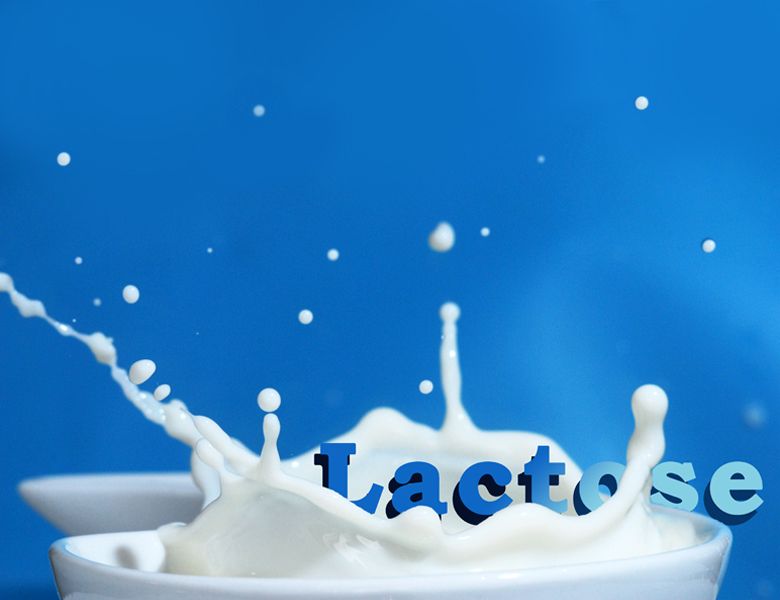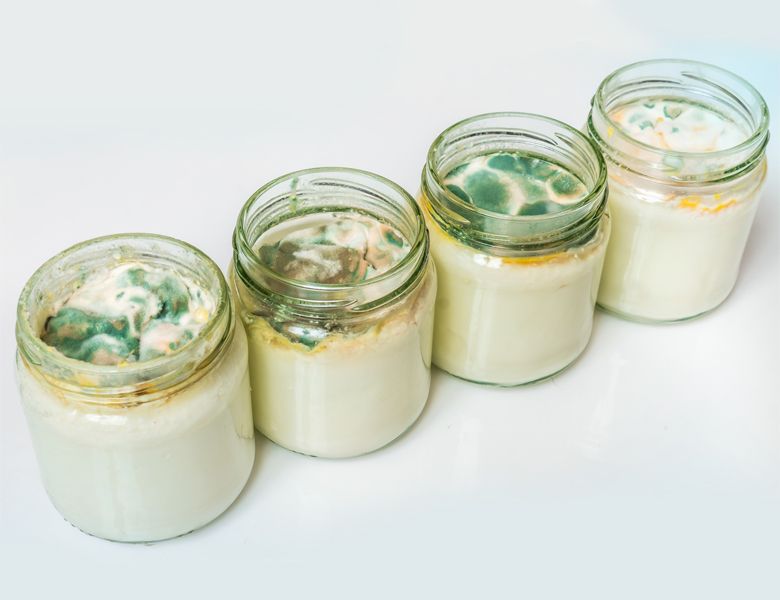Pros and cons of lactose-free products

- | آتاماد |
- Viewer: 220
Although most lactose intolerance people are able to tolerate up to 12 grams of lactose per serving, they prefer to avoid daires, and therefore insufficient intakes of calcium and vitamin D are linked to nutrient deficiency, decreased bone health, higher blood pressure, and diabetes.
Avoiding consumption of dairy products, a major source of nutrients can lead to nutrient deficiencies, especially choline, phosphorus, calcium, riboflavin, and vitamins B12 and A.
Does lactose hydrolysis affect calcium absorption?
The importance of calcium is well established because it is responsible for bone health, blood coagulation, muscle contraction, and nervous system function. According to studies, lactose has a stimulating effect on calcium absorption and a synergistic effect on the bioavailability of calcium.
Lactose-free dairy products should differ from skim dairy products only in lactose content, and can basically meet the nutritional needs of lactose-intolerant patients and others as well. In order to meet the special physiological needs of lactose-intolerant people, lactose-free dairy products can be enriched by increasing nutritional value. Apart from the direct addition of calcium, phosphorus, and vitamin D, there are other ways to enrich these products, for example, increasing the carbohydrate and protein content through a freezing concentration process, increasing the protein and calcium content of Greek yogurt, as well as improving the rheological and sensory properties of the product by replacing milk powder with lactose-free whey protein concentrate.
Pros:
1. Soy milk or lactose-free dairy?
Soy, rice, or almond beverages are often used as substitutes for cow's milk, which are also considered nutritious alternatives if they are fortified with vitamins D, A, B12, riboflavin, and calcium. Today, many alternative drinks are offered for people with lactose intolerance, like dairy products (such as lactose-free milk), and plant milks (such as oats, soy, etc.). Despite the popularity of these products in recent years, scientists recommend using lactose-free cow milk instead of calcium-fortified soy milk. In terms of calcium sources, fortified soy milk is not comparable to lactose-free milk. One study showed that the bioavailability efficiency of calcium in fortified soy milk is only 75% of that of cow milk. Therefore, most non-dairy alternatives are fortified with at least 20% more calcium than the recommended daily amount. As a result, lactose-free dairy products are the most ideal alternative for people who suffer from lactose intolerance. In addition, evidence shows that children prefer lactose-free cow milk to soy beverages.
2. Increasing sweetness and reducing calorie intake
The fact that LF milk is sweeter than regular milk reduces the need to add added sugars in dairy products by 10-15 grams per kilogram, without changing the taste, thus reducing the product's calories. According to studies, the absorption of glucose and galactose in LF products in the small intestine is similar to the absorption of glucose and galactose after lactose hydrolysis. Also, no difference was observed in the glycemic index of diabetic patients when consuming lactose compared to LF products. Therefore, the sweeter nature of these products means an increase in the perception of sweetness and not an increase in sugar.
3. Improving sensory properties and reducing post acidification
Another advantage of lactose hydrolysis in yogurt is the reduction of post acidification during shelf life. Apparently, some yogurt bacteria are less active in the absence of lactose or have difficulty shifting from lactose to glucose, leading to better sensory stability of the product.
It is generally believed that fermentation can not only improve the flavor but also increase functionality or nutrient content in products. The sensory evaluation of many LF yogurts is better than that of unhydrolyzed products. On one hand, this may be because lactic acid bacteria can directly use glucose to produce more aromatic compounds, alcohols, esters, and other flavor substances. On the other hand, more exopolysaccharides are produced which increase the viscosity and improve dehydration characteristics. In addition, some additives can also improve the quality of LF fermented products. For example, in a study, a low-lactose yogurt with added fiber was prepared which had good acceptability. Synthesis of GOS using lactase with high trans-glycosylation activity is another common method to increase the added value and improve the flavor of dairy products. For example, prebiotic-enriched cheese was produced with decreased lactose content. The taste and texture of prebiotic cheese were improved by trans-glycosylation.
Cons:
1. Milard reaction
One major chemical reaction impacting consumer perception of LF milk is the Maillard reaction, which is responsible for the formation of brown pigments and caramelized flavors in hydrolyzed milk. The reaction may lead to sensory changes in the milk, e.g., color, taste, texture, and reduction of nutritional value (loss of lysine which is an essential amino acid). Due to such unwanted changes, heat treatment of LF milk should be as gentle as possible as the Maillard reaction is known to increase with changes in pH and temperature. The quality and stability of LF milk are highly dependent on storage temperature, as the Maillard reaction can proceed significantly during the time on the shelf when stored at ambient temperatures. Therefore, the temperature at which the final product is stored is of higher significance than the actual UHT technology used. Other factors favoring the occurrence of Maillard reactions are proteases present in milk or proteases stemming from lactase preparation (mainly a problem in post-hydrolysis). The protease presence may cause proteolysis, which increases the Maillard reaction due to the higher level of free amino acids.
However, when the storage temperature was below 5°C, the proteolytic activity was inhibited. Therefore, the use of commercial lactase preparations with high purity and strict control of storage temperature can ensure the quality of lactose-free milk during the shelf life. Moreover, to avoid the Maillard reaction in UHT LF milk, researchers recommend hydrolyzing lactose after heat treatment. In addition, limiting the degree of lactose hydrolysis to 80-90% also helps prevent the Maillard reaction, thus avoiding the excessive sweetness in the product. Also, researchers have reported a method to reduce the perceived sweetness in lactose-hydrolyzed milk by adding sweetness-suppressing additives such as potassium salts of an organic acid like citric acid, malic acid, gluconic acid, and lactic acid.
2. Lactose-free milk powder production challenges
Hydrolyzed milk can further produce LF milk powder, but there are still many problems in the production of lactose-free milk powder. LF milk powder is more hygroscopic, which is related to the fact that there are more molecules in the amorphous state (glucose and galactose) during drying. It has been showed that spray-drying of skim milk with hydrolyzed lactose resulted in very low cyclone recovery of 25% and a large amount of powder remained stuck inside the spray dryer. Moreover, with the increase in lactose hydrolysis rate, adhesion to the drying chamber also increased, due to higher levels of particle agglomeration. In addition, due to the increase of reducing sugar in hydrolyzed milk powder, nonenzymatic browning in high-temperature processing occurs easily, resulting in increased Maillard reaction products and odor. As for the kinetics of the Maillard reaction in lactose-hydrolyzed milk powder, it is founded that hydrolyzed milk powder was prone to protein deterioration, mainly because galactose reacted faster with lysine than lactose in dairy products. At the same time, temperature is the most important factor as lower temperatures can reduce the deterioration of nutrients during storage.
3. Lactose-free ice cream production challenges
Since the solubility of lactose at room temperature is only 20% of that of sucrose, there are difficulties in LF ice cream production, including crystallization of α-lactose during freezing and the formation of sandy texture. Another problem in LF ice cream production is the low sweetness of lactose, which is about 20% of sucrose. The membrane was combined with an enzymatic method to solve the problem of the high sweetness of LF milk. Furthermore, when preparing LF ice cream, the addition of lactase can be used as a sugar-reduction method, because hydrolysis of 70% of the lactose in milk increased the sweetness of milk or yogurt to the same degree as adding 2% sugar. For example, with the increase in lactose hydrolysis, the apparent viscosity increased and the freezing point decreased, and the sensory properties of ice cream hydrolyzed with 75% lactose were similar to those of ice cream with 25% sugar reduction.
References:
- Peter J. T. Dekker, Damiet Koenders, and Maaike J. Bruins. “Lactose-Free Dairy Products: Market Developments, Production, Nutrition and Health Benefits.” Nutrients, 2019 Mar; 11(3): 551; doi:10.3390/nu11030551.
- Lactose-free milk: Lactose intolerance, nutrition and process technology, by Signe Christerson, 2021.
GET IN TOUCH
Copyright © 2023 Atamad.com All right reserved
Website design and SEO services by Seohama team – Web hosting by Sarverhama
Copyright © 2023 Atamad.com All right reserved
Website design and SEO services by Seohama team – Web hosting by Sarverhama








